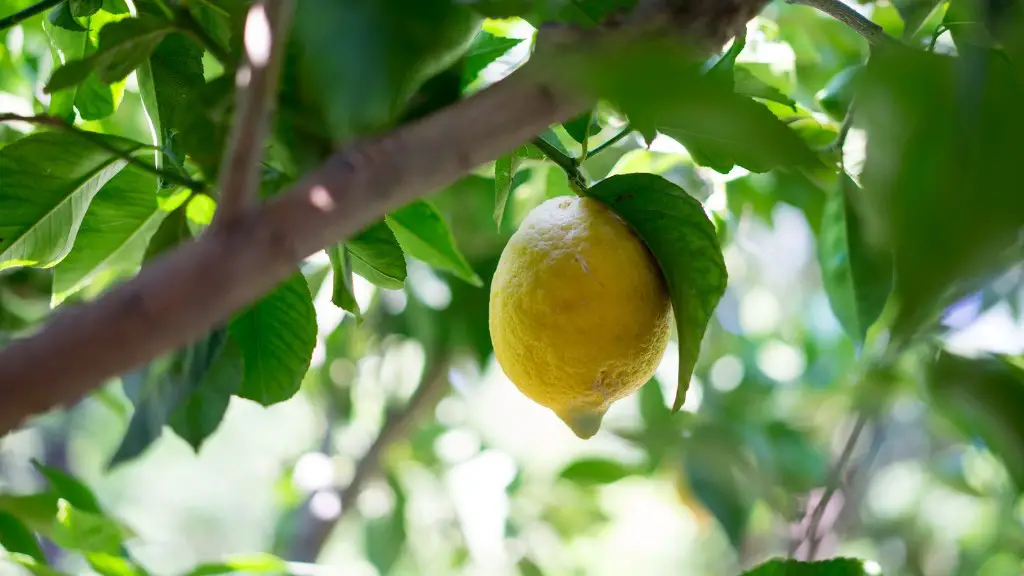Avocado trees are one of the most popular trees among gardeners, providing us with fruit that has many culinary, medical and cosmetic properties. But before you can reap the benefits of such a nutritious fruit, there are a few things you need to know about how to care for your avocado tree properly. When it comes to watering, this can be tricky as avocado trees vary in their water needs depending on several factors.
According to experts at Texas A&M University, the amount of water an avocado tree needs strongly depends on the tree’s location, size, and environment. For young trees in pots, they recommend you water them with a gallon of water every five days or so, allowing the tree to dry out enough between watering. Young trees in the ground will need a bit more water, typically about five gallons per week for trees that are about three feet tall and in a sunny location.
If you live in an area that experiences extreme temperatures, such as those in the deserts of Arizona, California or Nevada, you’ll need to be especially diligent with your watering. Here, avocado trees can use up to 15 gallons a week during the summer months, with less water during the cooler times of year. On the other hand, if you live in a humid climate such as in Florida, your avocado tree will need less water as humidity is usually sufficient to provide moisture.
The best way to determine how much water your tree needs is to observe it closely. During drought conditions, leaves start to yellow and drop before they should. During periods of regular or too much rain, watch out for fungal issues, such as the black spot, which appears on the leaves due to wetness combined with extreme heat. The ideal soil moisture is even and well oxygenated. You can test it with a moisture meter or your fingers. If the soil is dry two to three inches down, it is probably time to water; if it’s still wet, wait.
When watering your avocado tree, it’s important to thoroughly water the soil around the tree, on both sides of the tree’s roots, rather than just the top part of the soil. The roots of avocado trees tend to spread out wider than other trees, so make sure you’re getting them all with water. Watering for too long can be just as bad as not watering at all, as this can cause root rot. It’s best to water lightly and evenly.
In addition to watering your avocado tree adequately, you should also fertilize it. For young trees in pots, fertilize every two months or so with a balanced fertilizer, like a 10-10-10 mixture. For trees that are in the ground, you can use a slow-release fertilizer with high levels of nitrogen, such as a 16-4-8 formula.
Ultimately, the best way to water your avocado tree is to take into account the environment and climatic conditions, scout out the soil and pay attention to the tree’s physical cues. With the right amount of water, fertilizer, and TLC, you can enjoy healthy avocados for years to come.
Fertilizing an Avocado Tree
Along with watering, an avocado tree must be fertilized regularly for optimal growth. While a newly planted avocado tree should get a light dose of balanced fertilizer every two months or so, once the tree has been in the ground for a year, it’s best to start using a slow-release fertilizer, like a 16-4-8 formula. You should also supplement the standard slow-release fertilizer by adding something high in phosphorus and other nutrients, like fish emulsion or cottonseed meal, to give the tree a boost. Fertilizing your avocado tree once or twice a year should be sufficient for trees that are already established.
When you’re fertilizing, you should apply the fertilizer to the soil all around the circumference of the tree, spreading it out about a foot from the trunk of the tree and not directly onto the trunk itself. Try to apply fertilizer when the soil is wet, either from rain or from your own watering. Make sure to thoroughly water after applying fertilizer so that the nutrients can reach the roots.
It’s important to remember that too much fertilizer can be just as damaging as not enough, as it can cause the tree to become nutrient-overloaded, which can lead to weak or poor growth. So, use a light hand and always check with your local nursery or extension service if you’re not sure how much and what type of fertilizer to use on your tree.
Pruning an Avocado Tree
Pruning is another essential part of caring for your avocado tree, and it helps to keep your tree healthy and shapely. Pruning your tree will also help keep pests away. It’s important not to prune too much in one year, as this can weaken your tree and cause it to bear fewer fruits. The best time of year to prune avocado trees is in the late winter or early spring when the tree is out of its dormant period.
When pruning, you should aim to remove only dead, diseased or crossed branches, and weak branches that have grown too close to each other. Look for any branches that are posing a risk to the nearby structures or are potentially unstable due to the weight of their crown. You should also remove any shoots that are growing near the base of the tree or near the trunk. These shoots compete with your main branches for nutrients and sap and can weaken the tree.
To prune an avocado tree correctly, make sure to use clean and sharp pruning tools. If using a saw or other large tool, also make sure to wear protective gloves to avoid injury. It helps to use a ladder if necessary, so you can avoid any unnecessary strain on your arms or shoulders. When shaping the crown of your tree, always make sure to make your cuts at a slant to encourage quicker healing. Once you have finished pruning, make sure to thoroughly water your tree for the rest of the day to avoid stress.
Protecting an Avocado Tree from Pests
Unfortunately, there are a number of pests that can wreak havoc on an avocado tree, from birds to borers to mealybugs. One of the best ways to keep these pesky critters at bay is to keep your tree well-watered and fertilized, as this will help keep the tree strong and healthy, making it less vulnerable to disease and attack.
It’s also a good idea to carry out regular pest control around the tree by brushing away any webs, egg sacs or cocoons or using a spray or bait to keep insects away. If you spot any infestations in their early stages, you can also use an insecticidal soap or horticultural oil to get rid of them. If your tree has been severely affected, you may need to call in a pest specialist to help combat the problem.
Finally, you can also do your part in keeping pests away by making sure your tree is getting enough light and air circulation, as dense foliage can attract pests. Make sure not to crowd your avocado tree with other plants, as this can impair growth and weaken the tree.
Harvesting and Storing Avocados
If you’ve paid close attention to your tree and given it enough water and fertilizer throughout the year, you will likely have a healthy crop of avocados to harvest by late winter or early spring. To harvest your avocados, you should gently twist the fruit from its stem. Be sure not to pull on the stem or pluck the fruit, as this could damage the tree or leave the fruit vulnerable to disease.
Once the avocados are harvested, you can store them in a cool and dry place like a cellar or the bottom of the fridge. They can last a few days at room temperature, but for the best results, try to keep them in the fridge for up to two weeks. To help them last longer, wrap them in a paper towel before storing in a plastic bag or container.
If you have a surplus of avocados, you can always freeze or can them to make them last longer or make them into delicious guacamole or other avocado-based dishes. However you choose to enjoy your avocados, you can rest easy knowing that you can reap the benefits of an avocado tree, with the right care and love.
Grafting an Avocado Tree
When it comes to growing avocados, the best way to ensure a good harvest is to purchase a tree that has already been grafted. Grafting is the process of taking the branches of one tree, called the scion, and attaching it to the rootstock of another tree. By doing this, you can choose the variety of avocado you’d like to grow and create a tree that is more likely to bear fruit.
When you are selecting a rootstock, you should make sure it is compatible with the climate and soil in your area, as the rootstock is the main component that ensures the tree will thrive in its new environment. It’s also important to make sure your scion is a compatible variety for the rootstock and is disease-free, as a weak or diseased scion can cause the tree to produce fewer fruits.
If you’re looking to create your own grafted avocado tree, make sure you have the proper equipment and knowledge to do it correctly. This can be tricky and requires a certain level of skill in order to be successful, so it’s best to consult a horticultural professional before attempting it.
By following the correct care guidelines, you can easily create a beautiful and bountiful avocado tree that can provide your family with dozens of avocados every year. With enough water and fertilizer, careful pruning and pest protection, you can enjoy the delicious fruits of your labor for years to come.



